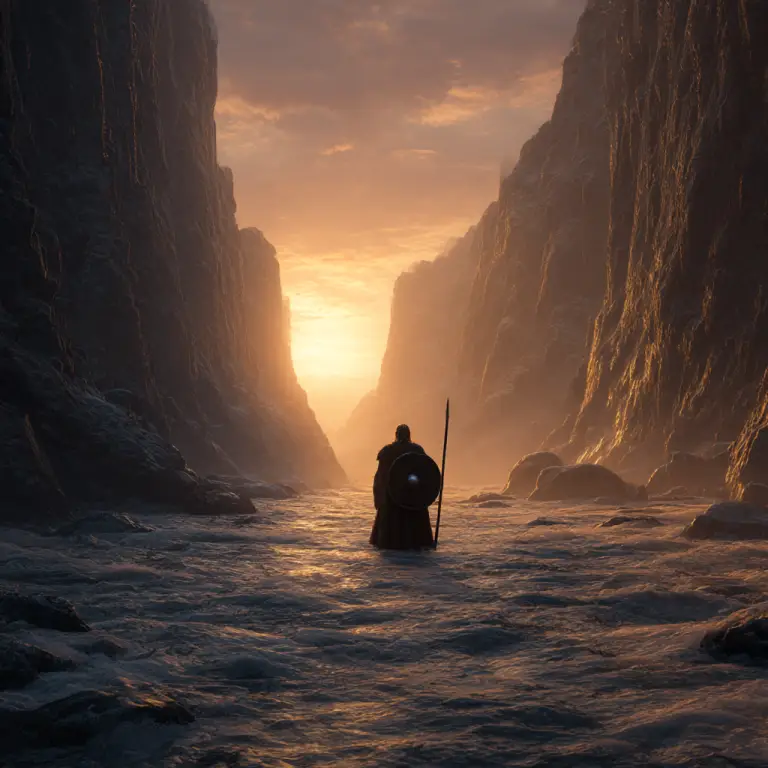The Svöl River is one of the lesser-known rivers mentioned in Norse mythology, yet it plays an important role as the setting for one of the most famous battles in the Viking Age – the Battle of Svolder. While not as mythologically symbolic as rivers like Gjöll or Élivágar, the Svöl River represents the boundary between life, destiny, and the unfolding of fated events in the sagas.
In the Heimskringla by Snorri Sturluson, the Svöl is described as the location where King Olaf Tryggvason of Norway met his downfall around the year 1000 CE. According to the saga, King Olaf, who had converted Norway to Christianity, was sailing with his fleet when he was ambushed by a coalition of his enemies. These included King Svein Forkbeard of Denmark, King Olof Skötkonung of Sweden, and Earl Eirik Hákonarson of Lade. The opposing forces had hidden their ships near the mouth of the Svöl River, waiting for Olaf’s fleet to pass.
The exact location of the river has never been firmly established, and scholars have long debated whether the Svöl was a real river or a poetic construct. Some sources place it near the island of Rügen in the Baltic Sea, while others suggest it may have been near the coast of Pomerania or in Danish waters. The uncertainty around its location adds to its mythical quality, blending geography and legend.
In the sagas, the river is described as calm and deceptive, concealing danger beneath its surface. The Battle of Svolder that took place there was not only a historic confrontation but also a symbolic moment that reflected the clash between old beliefs and new faiths in Scandinavia. Olaf Tryggvason, a Christian king, faced a coalition that represented the lingering pagan order. His defeat and disappearance into the sea from the deck of his ship, the Ormen Lange (“Long Serpent”), marked the end of his reign and the beginning of a new era for Norway.
Though not directly linked to the cosmological rivers that flow from the wells of the world tree Yggdrasil, the Svöl River holds a distinct place in Norse cultural memory. It stands as a reminder of how myth, history, and legend often merge in the sagas, turning natural features like rivers into stages for divine and heroic drama.
